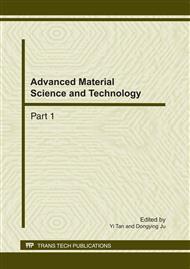p.365
p.369
p.375
p.379
p.383
p.387
p.391
p.395
p.399
Poly(vinyl Alcohol)/Cellulose Nanocomposite Pervaporation Membranes for Ethanol Dehydration
Abstract:
In this study, pervaporation membranes were prepared from poly( vinyl alcohol) (PVA) with different amounts of cellulose nanocrystals as filler, and characterized by scanning electron microscopy (SEM). The characterization results demonstrated that cellulose nanocrystal particles dispersed homogeneously within the PVA matrix. Moreover, the pervaporation performance of these membranes was investigated using the separation of ethanol-water mixture as model system. Among all the prepared membranes, PVA/cellulose nanocomposite membrane containing 1 wt% cellulose nanocrystals exhibited the best pervaporation performance, whose averaged permeation flux reduced slightly but separation factor was increased from 83 to 163 for 80% aqueous solution of ethanol at 80 °C respectively.
Info:
Periodical:
Pages:
383-386
Citation:
Online since:
February 2011
Authors:
Keywords:
Price:
Сopyright:
© 2011 Trans Tech Publications Ltd. All Rights Reserved
Share:
Citation:


